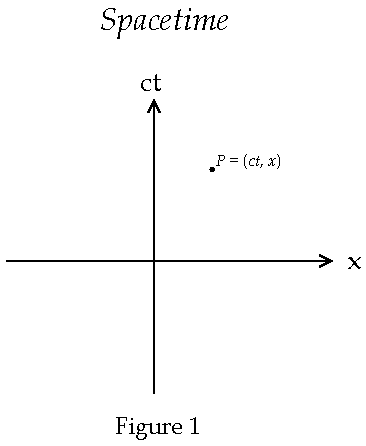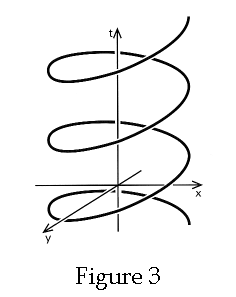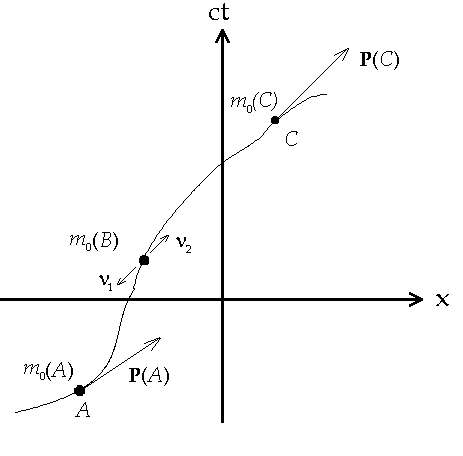
Back
to Physics World
Back to Special Relativity

On
September 21, 1908 Herman Minkowski delivered an address at the 80th assembly of
German Natural Sciences and Physicians, at Cologne. The address was called
"Space and Time". This is also in a section of a Dover Book called
"The Principle of Relativity," which has several famous papers in it
dealing with relativity. The preface of the article reads
The
views of space and time which I wish to lay before you have sprung from the soil
of experimental physics, and therein lies their strength. They are radical.
Henceforth space by itself, and time by itself, are doomed to fade away into
mere shadows, and only a kind of union of the two will preserve an independent
reality.
This address was given after Einsteinís landmark 1905 paper on relativity. Minkowski, a former math professor Einsteinís, saw from Einsteinís work that it could be expressed in geometric terms. In this article Minkowski writes
We will try to visualize the
state of things by the graphic method. Let x, y, z be rectangular co-ordinates
for space, and let t denote time. The objects of our perception
invariably include places and times in combination. Nobody has ever noticed a
place except at a time, or a time except at a place. But I still respect the
dogma that both space and time have independent significance. A point of space
at a point of time, that is, a system of values x, y, z, t, I will call a
world-point. The multiplicity of all thinkable x, y, z, t systems
of values we will christen the world.
The
term world-point is now most often referred to as an event and the
term world is now referred to as spacetime. Since events in
spacetime can be placed into a one-to-one correspondence with the 4-tuples of R4
in a continuous way we say that spacetime is a four-dimensional manifold.
If we consider a cross section of spacetime where y = z = 0 and let the x-axis
run left to right and the time axis run up and down then we obtain spacetime
diagram which, in this particular case, is the plan (ct)x as
show below in Fig. 1.

For
simplicity we have chosen to study a flat plane. The reason for this will
be made clear below. A point in spacetime is an event, P, which will have
coordinates P = (ct, x, y, z). A simple and often used
example of an event is that of a firecracker going off. The firecracker will
have a specific location which will correspond to the (x, y, z) portion
of the event and the explosion occurs at a specific time, t. The time
axis is scaled such that it has the same dimensions of space and the magnitude
is such that a photon leaving the origin at ct = 0 in the +x
direction will trace out a world-line which will be at a 45 degree incline with
respect to the x-axis. Suppose
our firecracker exploded at ct = 0 at the spatial origin in the above
spacetime diagram. We wish to plot the worldliness of the light that is emitted.
Since we have suppressed the y and z axes we need only draw the
world-lines of two photons, one moving in the Ėx direction and one
moving in the +x direction. These two photons could represent the wave
front of the flash of light. This is shown in Fig. 2 below

As
another example of a curve in spacetime is that of a particle moving in a circle
in the xy-plane. As time increases the world point corresponding to the
time and place of the particle traces out a helix as time progresses. This is
shown below in Figure 3

As
a the proper time of the particle, i.e. time as measured by a clock co-located
with particle, increases the world point will correspond to different proper
times and as such will serve as a parameter of the world line. In the spacetime
diagram in Figure 4 below shows

as the particle passes
through the events A, B, and C the proper mass, m0, may have different values. As shown in the diagram
the particle starts at event A with a certain proper mass. When the
particle is at event B it radiates two photons in opposite directions.
The proper mass must therefore decrease. When the particle is at event C
the particle will still have the lower proper mass than it did before event B
[1] The
Principle of Relativity, H.A. Lorentz, H. Weyl, Albert Einstein, Dover
Press,
Back
to Special Relativity
Back to Physics World